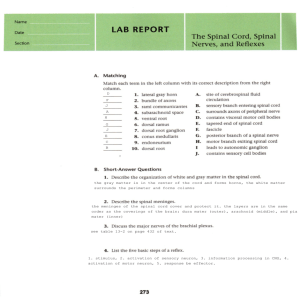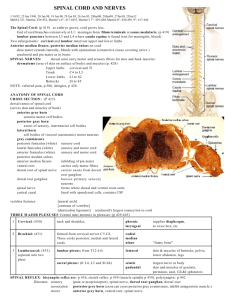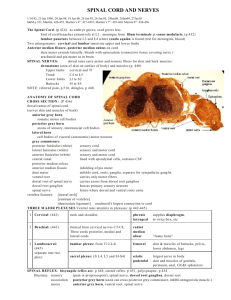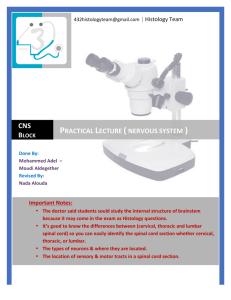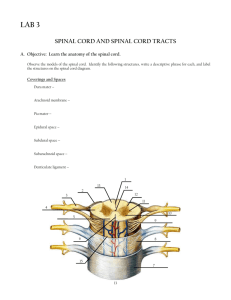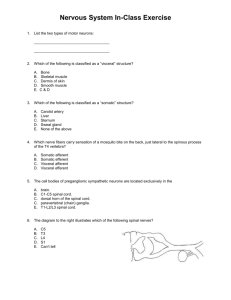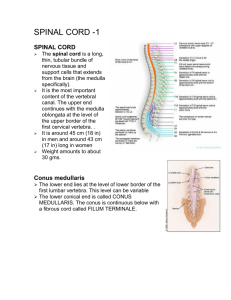HISTOLOGICAL FEATURES OF THE SPINAL CORD
advertisement
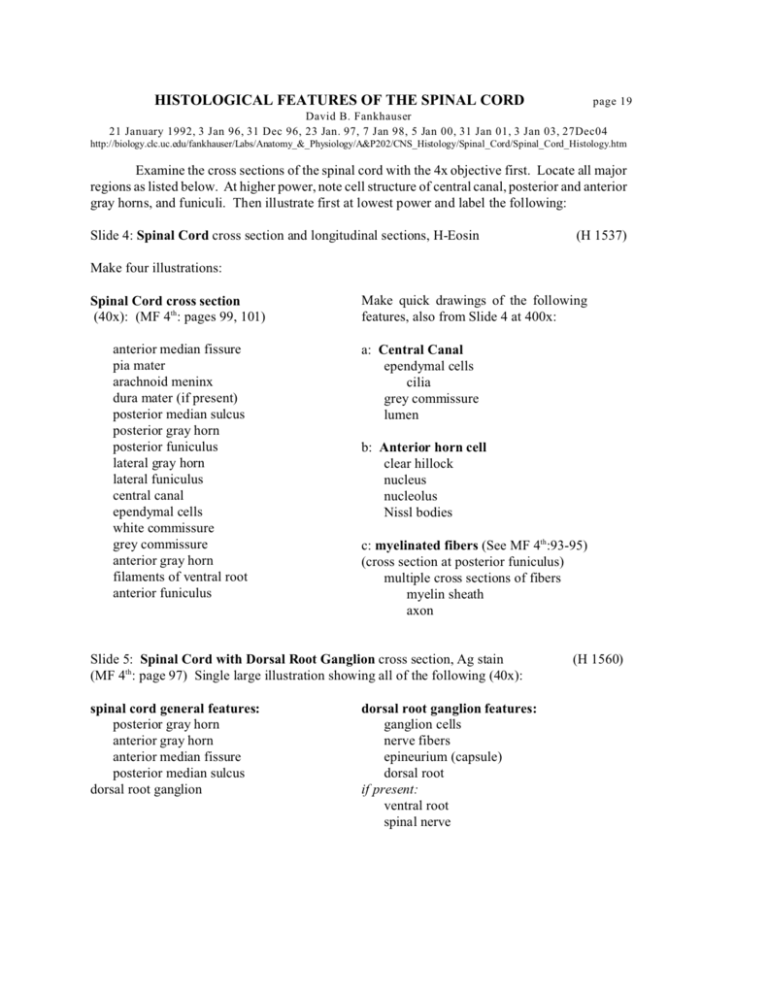
HISTOLOGICAL FEATURES OF THE SPINAL CORD page 19 David B. Fankhauser 21 January 1992, 3 Jan 96, 31 Dec 96, 23 Jan. 97, 7 Jan 98, 5 Jan 00, 31 Jan 01, 3 Jan 03, 27Dec04 http://biology.clc.uc.edu/fankhauser/Labs/Anatomy_&_Physiology/A&P202/CNS_Histology/Spinal_Cord/Spinal_Cord_Histology.htm Examine the cross sections of the spinal cord with the 4x objective first. Locate all major regions as listed below. At higher power, note cell structure of central canal, posterior and anterior gray horns, and funiculi. Then illustrate first at lowest power and label the following: Slide 4: Spinal Cord cross section and longitudinal sections, H-Eosin (H 1537) Make four illustrations: Spinal Cord cross section (40x): (MF 4th: pages 99, 101) anterior median fissure pia mater arachnoid meninx dura mater (if present) posterior median sulcus posterior gray horn posterior funiculus lateral gray horn lateral funiculus central canal ependymal cells white commissure grey commissure anterior gray horn filaments of ventral root anterior funiculus Make quick drawings of the following features, also from Slide 4 at 400x: a: Central Canal ependymal cells cilia grey commissure lumen b: Anterior horn cell clear hillock nucleus nucleolus Nissl bodies c: myelinated fibers (See MF 4th:93-95) (cross section at posterior funiculus) multiple cross sections of fibers myelin sheath axon Slide 5: Spinal Cord with Dorsal Root Ganglion cross section, Ag stain (MF 4th: page 97) Single large illustration showing all of the following (40x): spinal cord general features: posterior gray horn anterior gray horn anterior median fissure posterior median sulcus dorsal root ganglion dorsal root ganglion features: ganglion cells nerve fibers epineurium (capsule) dorsal root if present: ventral root spinal nerve (H 1560)
